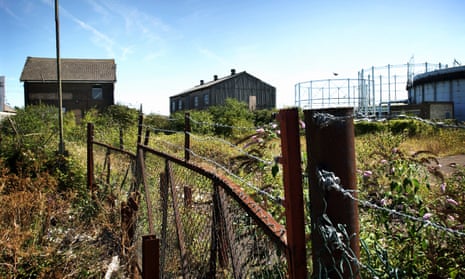A million new homes could be built on previously used land in England, with more than 2,600 new sites identified in the past year.
Additional brownfield sites with room for more than 18,000 new homes have been found in Barnet, north London, as well as sites with capacity for 19,000 homes in south Cambridgeshire, 3,000 in Sheffield and 4,600 in Bristol, according to research into public registers by the Campaign to Protect Rural England.
The government has said 300,000 new homes need to be built across the UK every year to keep up with demand, but delivery is running at the rate of just 180,000 a year, with opposition from local groups and campaigners to construction in the countryside remaining a significant block.
House builders often object to developing land previously used for factories or car parks because it can be expensive to bring back into use, compared with open fields. But the CPRE said that official registers showed that almost two-thirds of the available sites were classed as deliverable within five years.
The campaign group, whose president is the pottery designer Emma Bridgewater, said the brownfield figures and the discovery of capacity for around 120,000 new homes in the past year showed the government needs to adopt an unambiguous “brownfield first” policy.
“Building on brownfield presents a fantastic opportunity to simultaneously remove local eyesores and breathe new life into areas crying out for regeneration,” said Rebecca Pullinger, the CPRE’s planning campaigner.
The proportion of homes built on the green belt doubled from 2% to 4% of all new homes between 2016 and 2017, while the share built on brownfield land fell from 61% to 56%, according to government figures.
The government’s housing white paper last year demanded priority for suitable brownfield sites, but said building on green belt would be allowed if offset by improvements to environmental quality and access on remaining protected land.
The government has announced a plan to build up to 1m new homes in an arc between Oxford and Cambridge in the next 30 years, which has sparked concern in five affected counties, including Buckinghamshire, Northamptonshire and Bedfordshire. A Survation poll for the CPRE last week found three-quarters of residents believed it would cause damage to the countryside and environment.
